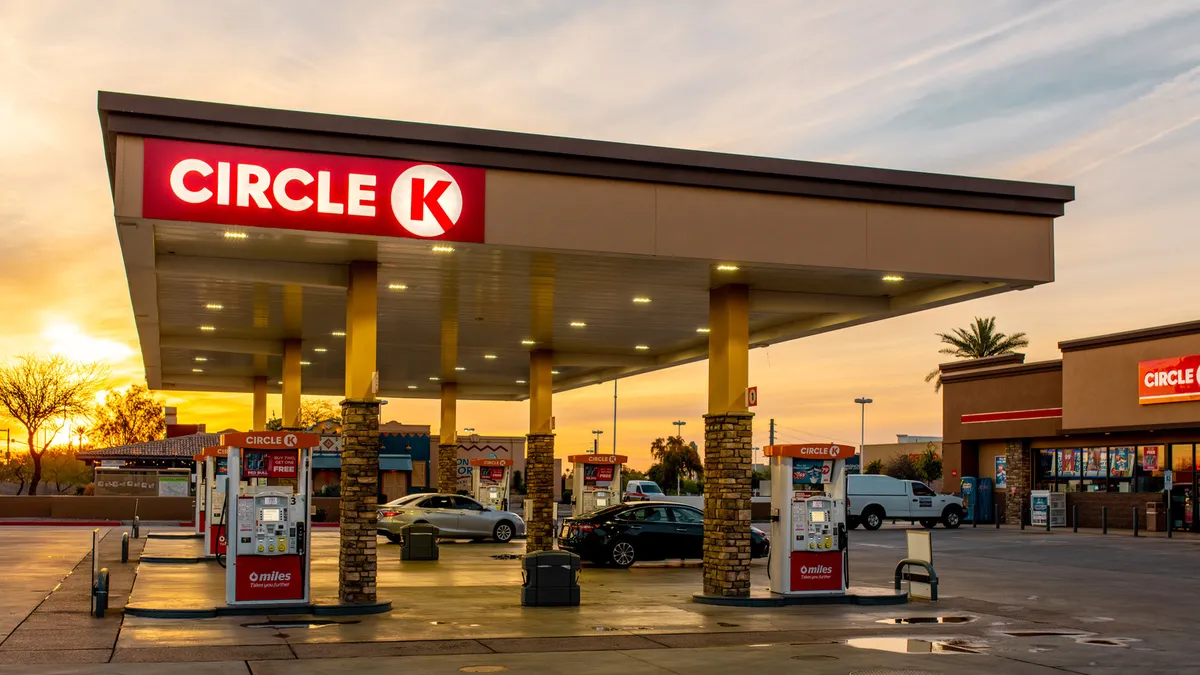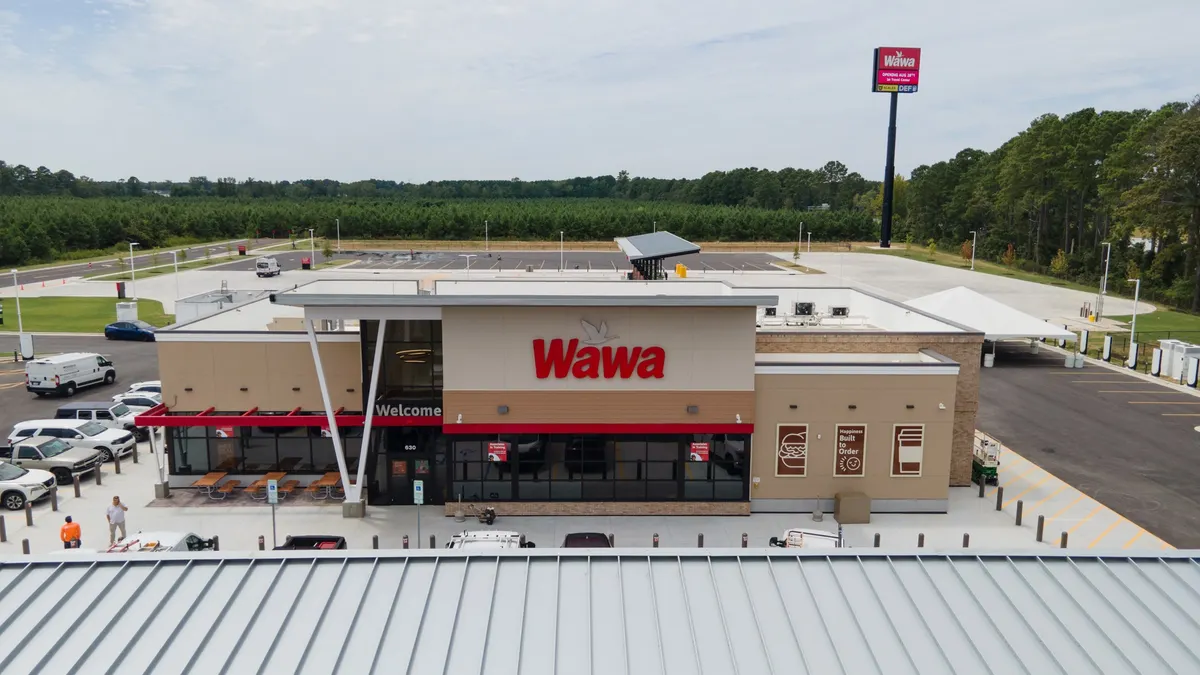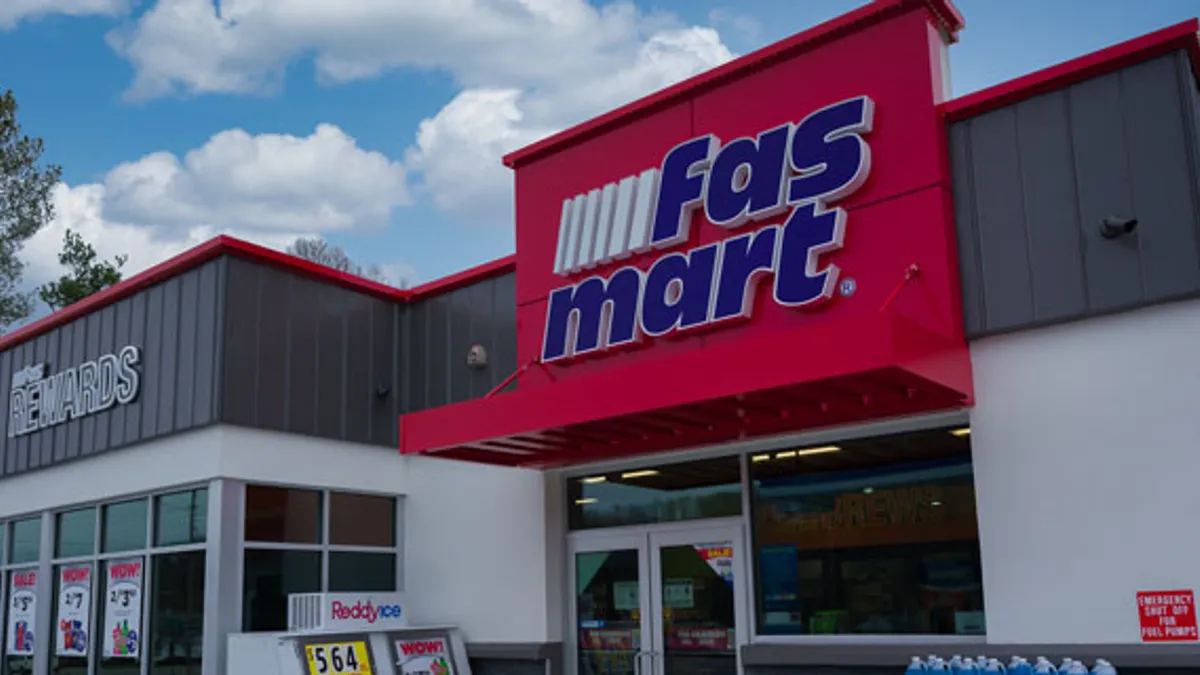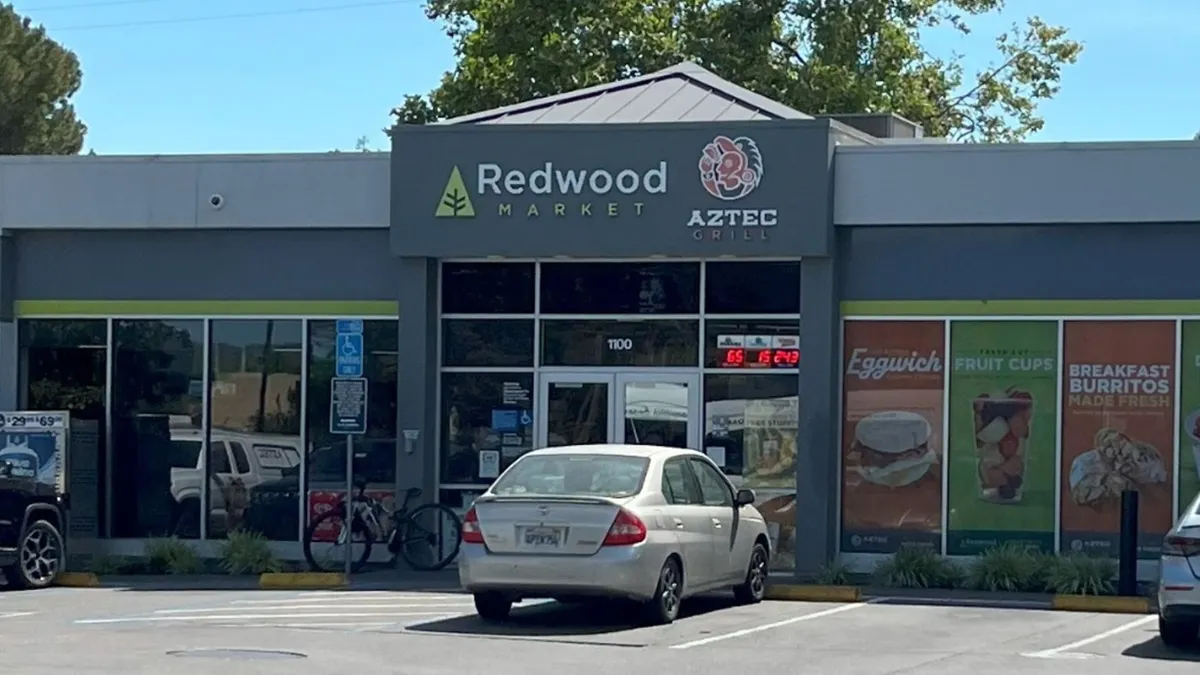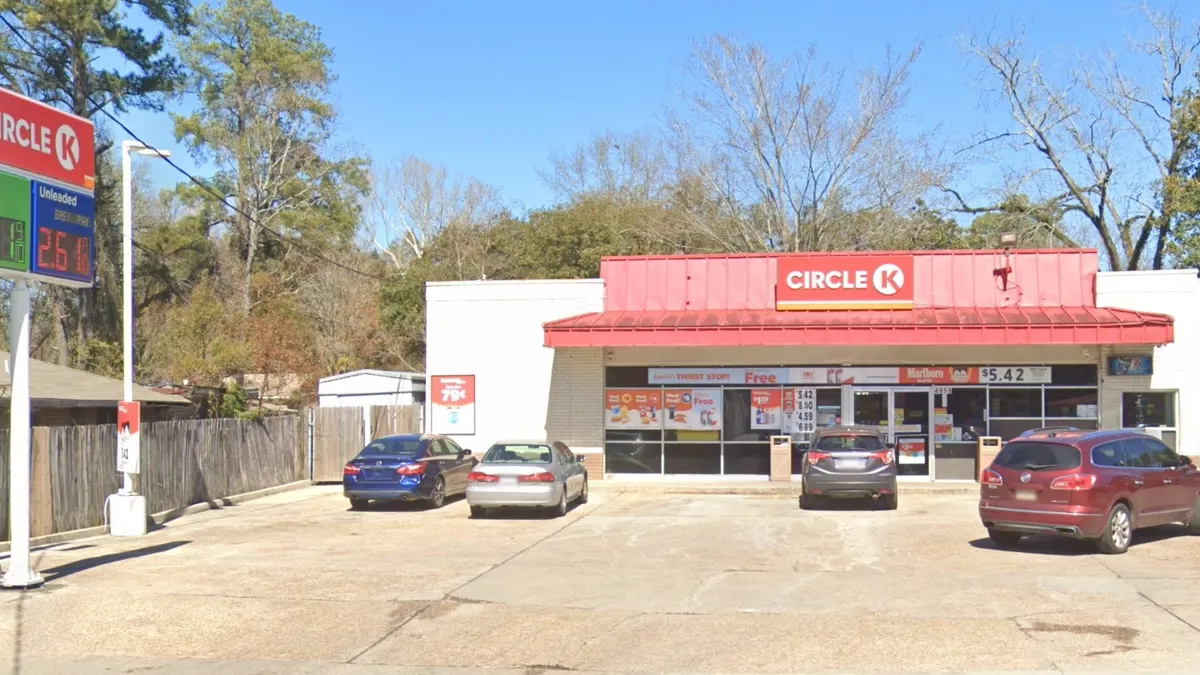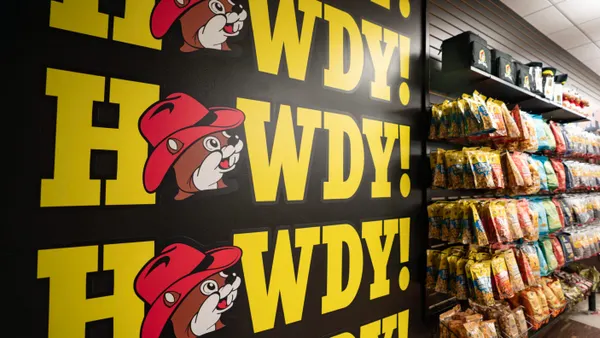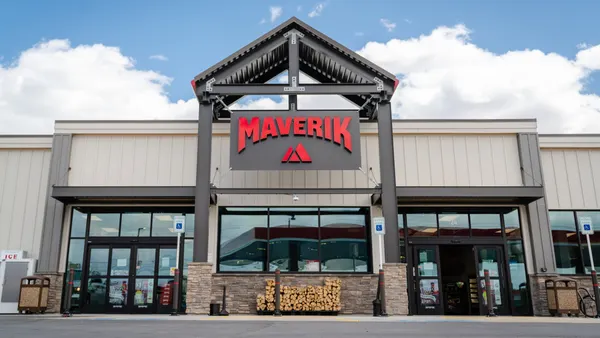Head over to Kum & Go’s Twitter page, and you probably won’t see many posts about its popular made-to-order foodservice program, gasoline-free store concept or frictionless fleet fueling payment system.
But you might see the c-store chain make a post that mocks Kylie Jenner for changing her child’s name — a personal favorite of Erin Swisher’s.
“I saw that [news] immediately, and we jumped on it and made a parody post about it, saying that Kum & Go was going to change our name,” Swisher, social media specialist for Kum & Go, said in an interview. “I have been waiting anxiously since March for when [Kylie Jenner] is going to announce her baby's new name because I plan on jumping on that right away.”
Swisher and Matt Riezman, Kum & Go’s director of brand marketing, lead the brand’s social media team, which has become known around the c-store industry for its eccentric posts and online personality.
The two of them recently sat down to talk about the strategy behind their social-media presence, how they approach different platforms, how other c-store retailers can up their social game and much more.
This interview has been edited for length and clarity.
C-STORE DIVE: Kum & Go’s social-media presence is pretty unique. How did your current social strategy come to fruition?
RIEZMAN: Our current strategy really started around 2019 when we decided to make a pivot and really begin working on developing a much more relatable voice that I think was more true to the values of who we were as a company. Prior to that, it was more focused on talking about promotions.
And really, what we saw was that all our social media was, was a place to make jokes about our name. We thought that was something we could actually embrace, because we do have a memorable name and we have for a long time.
Since that pivot, we've learned a lot about what our audience likes to engage with, and we've learned about how our followers take in information. So we really just focused on listening and learning from our followers as we've grown to understand what the strategy is.

How would you describe your social-media voice?
SWISHER: We really focus on being real, having relatable content — joyful, that people laugh at. Not taking ourselves too seriously. We take our business super seriously, but not ourselves.
Who is making these posts? Is it just one person, or a group of people writing and making this content?
RIEZMAN: Our team is actually a combination of internal and external partners. I think we really relish the ability to be flexible in terms of how we create content based on the platform and the campaign. So it is a team effort and we collaborate a lot within that team versus having just one person.
Is it a large group? How many people is it?
RIEZMAN: We have a lot of different people that bring us ideas. We workshop ideas with different people in the company. So the core team has three to four people, but it's really much broader than that.
Can you talk about how you approach each social platform? What does a successful Facebook post require versus Twitter versus LinkedIn? And how do you use them all in tandem?
SWISHER: For us, success is about two things: the audience and the context of the platform. Our audiences do well across both platforms. They differ on both platforms in demographics and as to how they like to engage. All good posts do well across all platforms.
RIEZMAN: We know our audience pretty well. We know we often have a good sense of what will be of more interest to the audience on what platform and, as you know, a lot of our humor is contextual to the platform. But as Erin said, good posts do well across platforms. You'll see us reposting a tweet on Instagram, and if it does well on Twitter, it almost always does well on Instagram as well.
I've noticed you take subtle — and sometimes not so subtle — jabs at Casey's General Stores and Kwik Trip. How did these social-media rivalries become part of your strategy and why have you pinpointed them, particularly, to call out?

RIEZMAN: I don't know about “rivalries” as a term. We compete with Casey's and Kwik Trip, or Kwik Star as they’re called in our footprint, every day. We're often across the street. And both of those companies are quite a bit larger than us when it comes to store count. Social media, for us, is a bit of an equalizer because users don't necessarily care how many stores you have or how big you are. We really enjoy banter with Kwik Trip a lot. I think it keeps us fresh.
It always seems to be Tuesday night is our place in their content calendar. We usually have to block off Tuesday nights to make sure that we have a pithy comeback for them.
Walk me through the process of creating the content for each post, whether it’s a snappy punchline or a funny video.
SWISHER: Our content comes from three different places: pop culture, interactions we have on social media and what's going on in our stores. Everyone brings their own ideas and we workshop it to get our final posts. Everyone kind of has their own specialty area — I'm really good at pop culture — so it's really fun to get everyone's different opinions and kind of create a banger post from there.
When you do all those workshopping sessions and you get everyone's ideas, do you sit in a room and you're like, ‘Okay, what can we cover right now?’ Is it as simple as that, or is it more of a formal process?
SWISHER: It's both. Some of my favorite work comes on the fly. We bring our ideas to the table. Sometimes Matt says no if it's too edgy. It's sometimes planned out and we think of it way in advance and we get it as perfect as possible. And then sometimes, someone late at night has an idea or super early in the morning and we come in and just let it fly.
With Facebook and Instagram and Twitter, a lot of those posts are very similar. Does your target audience on those platforms differ?
RIEZMAN: Our target audience differs in some ways and not in others. The way that it doesn't differ is that our target audience is really people that love shopping at Kum & Go. I think we also have a big part of our audience that people don't necessarily think about, but it's people that love talking to their friends and family and followers about Kum & Go. Those are really our targets, because if you think about organic social media, we're not going to go out and find a ton of people that don't know about us, right?
Sometimes when stuff goes viral, people learn about us, but it's really about speaking to our fans and our advocates, and that doesn't change across platforms.
We really prioritize being engagement-first, because that's how we are successful. When we try to get too specific or try to find too specific of a person, we often end up falling short on engagement. We might adjust based on the platform, like kind of knowing who follows us on each of the platforms. Some content may be more relevant to our audience on one platform than another.
I’ve noticed on many of your platforms, your audience engagement is terrific. How has being able to chat in real-time with your audience on social media help grow your brand?
RIEZMAN: The way that we think about it is putting a face to the name. We're a retail establishment, right? People that go in and engage with Kum & Go, their experience is somewhat limited to the people that they talk to, the products that they buy habitually. But on social, we can put more of a face to the name and talk about who we are as a brand [and] what makes us different. It helps us bring what we do as a business to life for those people. On social, we really get to go out there and see how people react and take that back to the next round of the future decisions we make.
For c-store brands looking to up their social-media game but not sure how to do so, what would you tell them to do? What should their strategy or starting point be?
SWISHER: Figure out what your voice is and own it. Don't try to be another brand — you can look up to brands, but don't try to be them. Don't be afraid to be edgy — followers like relatable, funny content. Get to know your followers, engage in conversations with them. I learn a lot and get a lot of ideas just based on the [followers] that I'm interacting with. I treat them like they're my friends. They don't make friends with a business, but they know that there's a person behind the account and [that] our voice is behind it.
Is there anything else either of you would like to add?
RIEZMAN: We think we've heard every joke about our name, but every once in a while, a new one surprises us.





